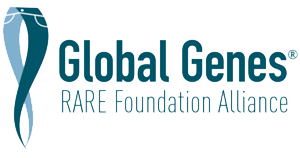Education starts at birth. Between the ages of 0 and 3 years of age, putting the proper supports in place is a must. Knowing where to find them is not always as easy. So step one, understand what options are available to you and your child. At these ages you would want to learn about the following programs, which are often referred to as “Individual Family Service Plans” (IFSP) and/or “Early Intervention Plans.” Truly, the IFSP is supported by early intervention plans, but sometimes the two names are interchanged.
These services are funded by the U.S. Department of Education’s Individuals with Disabilities Education Act, Part C. They are designed to meet the early intervention needs of your child , birth to 3, who qualify as an infant or toddler with either a developmental or physical disability. The regulations governing these services specifically include inborn errors of metabolism as a qualification criteria under physical or mental conditions that affect development.
These programs will support your family as well as your child as he/she attempts to reach basic milestones in development. They will develop a plan to address the whole child’s educational needs to include:
- Physical Development
- Cognitive Development
- Communication Development
- Social or Emotional Development, and
- Adaptive Development.
When milestones within the above areas are not being reached, IFSP’s early intervention becomes a huge asset in aiding families to build strong educational foundations and building blocks.
Below is a possible listing of newborn signs of mito, which could lead to the need for early interventions and the writing of an Individual Family Support Plan (IFSP) for support. Mito newborns can present with any of the following signs and symptoms from birth onward:
- SeizuresEpisodes of abnormal electrical activity in the brain.
- Vomiting
- Jaundice
- Diarrhea
- Failure to thrive
- Abdominal bloating
- Cyanosis
- Difficulty sucking and swallowing
- Hypothermia
- Fevers with no known origins
- Lethargy
- Odd odor
- Neurological issues
- Lack of reflexes
- Weakened levels of alertness
- Dysmorphic features
- Large liver or spleen
- Hyperactivity
- Irritability
- SepsisA potentially life threatening condition that occurs when the body's own extreme immune response to an infection or injury damages its own tissues. Also called blood poisoning or septicemia. Patients, SIDS, or syndrome like symptoms that present as “shock”
These possible presentations of symptoms and a mitochondrialRelated to the mitochondria. disease diagnosis have brought you here, where you, your family, and child will find support, both emotionally and educationally.
As early intervention programs begin at birth, the support for your entire family through the establishment of an IFSP will be a valuable tool in aiding your family to obtain the necessary supports that you may need. Many other early interventions from technical access, to mobility options, and emotional support groups are offered and supported through your IFSP.
It is very IMPORTANT to remember, that as your child reaches age 3, the IFSP will probably change status from an IFSP to an Individual Education Plan or IEPThe skills that need to be taught by an educator or related services professional so that the child's educational needs are met. (covered underneath Part B of the Individuals with Disabilities Educational Act). Each individual state has the option of allowing children to remain in Part C coverage with an IFSP until the age of kindergarten, at the state’s discretion.
However, you, as the parent, also have the option to refuse continued Early Intervention Services and insist that your child be considered for an IEP at any time beyond the age of 3. Many parents learn early on to never release or sign off of their child’s IFSP supports until the IEP has been established and qualified. With the 2004 reauthorization of IDEA, Part C coverage, the IFSP must include a transition plan to be initiated before the release from Early Intervention Services.
This transition plan is designed to create a “seamless transition” between Part C coverage and Part B coverage and must include
1) “steps for the child with the disability and his or her family to exit from the program” and
2)”any transition services needed by that child and his or her family” (§303.344h).
Below are additional resources for early intervention:










